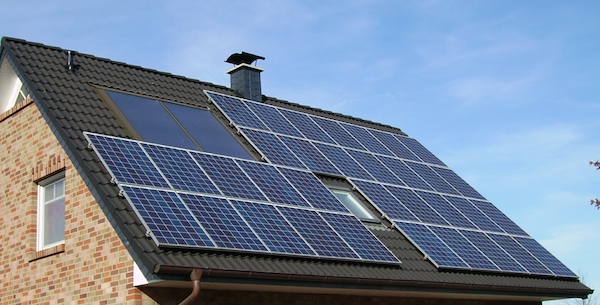
Researchers at Northwestern University have developed a new solar cell that uses tin instead of lead perovskite as a collector of solar energy. This cheap and environmentally-friendly solar cell can therefore be made without any high-tech equipment or hazardous materials.
The new solar cell developed by the team uses a structure called a perovskite and utilizes tin instead of lead as the light-absorbing material. Lead perovskite is a solar cell material that can convert up to 15 per cent of sunlight to electricity, which is very close to the efficiency of the current solar cells. The team developing the new cells is certain that tin perovskite should be able to match or even improve on that result.
These new cells are the brainchild of lead researcher Mercouri G. Kanatzidis, who first developed, synthesized and analyzed the material. Afterwards, him and nanoscientist Robert P. H. Chang from Northwestern worked together to engineer a usable and efficient solar cell from the material. The tin-based perovskite layer of the new solar cell acts as an efficient sunlight absorber and is placed between two electric charge transport layers for conducting electricity.
The solid-state tin solar cell is a sandwich of five layers, with each layer contributing to the effectiveness of the cell. The first layer is electrically conducting glass that lets sunlight enter the cell. The next layer is composed of titanium dioxide and is deposited onto the glass. Together these two layers form the electric front contact of the solar cell.
After this, the tin perovskite (that is the light absorbing layer) is deposited, which is done in a nitrogen glove box to avoid oxidation. Next comes the hole transport layer, which is needed to close the electrical circuit and produce a functional cell. The final step is applying a thin layer of gold caps and the resultant solar cell is only about one to two microns thick. These cells achieved energy conversion efficiency of 5.73 percent in tests done with simulated full sunlight.
Since currently used solar cells are not made in a very environmentally friendly way, it is great to see scientists trying to solve this problem. Sure, translucent solar cells may be the future, but affordable solar energy harvesting solutions that can be developed and put on the market in the next few years are equally, or perhaps even more, welcome.
Related Articles on JetsonGreen.com:
Researchers Develop Semi-Transparent and Decorative Solar Cells
New Way of Cooling Solar Cells
Could Tofu be the Answer to Greener Solar Cells?

Leave a Reply
You must be logged in to post a comment.